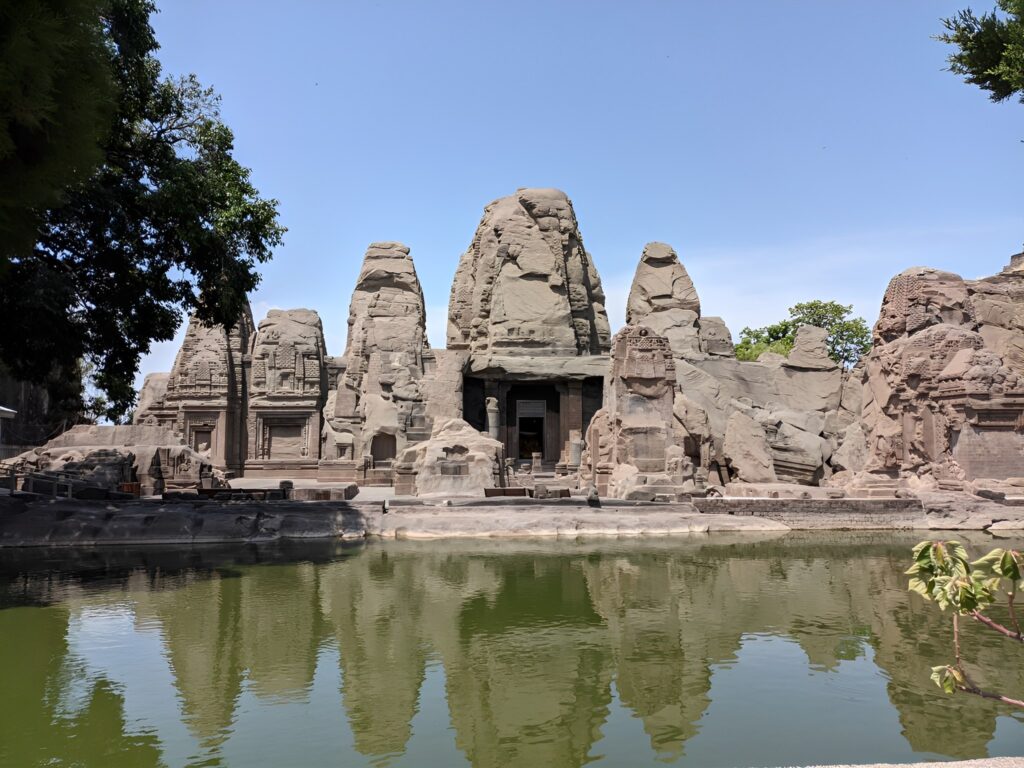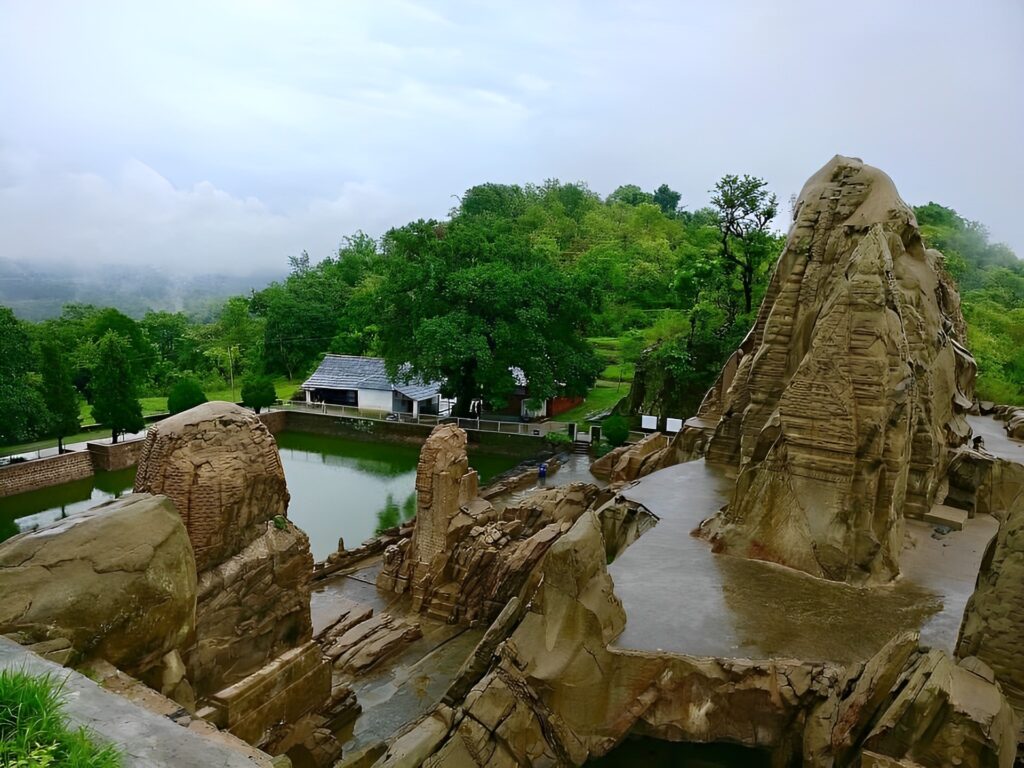
India’s history of rock-cut temple architecture is quite rich and fascinating. The Ajanta and Ellora caves in Maharashtra and the Panch Rathas of Mahabalipuram Temple in Tamil Nadu all speak about the architectural art of the golden ages.
In northern India, Masrur Rock Cut Temple in Kangra, Himachal Pradesh, is from the same league. A group of 13 monuments carved from a single rock gives the visitors multiple questions to wonder about: “How is this possible?”
Legend
As per legend, the temple was constructed during the Mahabharata period. During their exile, the Pandavas built the temple, but their true identity was revealed to the public. Thus, they have to leave the place before finishing it.
Another story says that Pandavas wanted to reach heaven shortly, so they began constructing temples inside the temple. They wanted to finish as early as possible. So they started the work the following day as early as possible. This made Lord Indra, the god of heaven, angry. He doesn’t want an easy path to heaven. So he disguised himself as a crow and began crowing early in the morning. It impedes the work of Pandavas Completing work.

Architecture
A monolithic structure built from a single rock appeared to be a complex of shrines, but it is an integrated monument. It’s a combination of 15 rock-cut temples. Unlike Hindu temples, temples do not face east; they face northeast toward the mighty Dhauladhar ranges.
The main temple is called Thakurdwara and contains images of Lord Ram, Lord Lakshmana, and Devi Sita.
It’s built in the Nagara style. In Ngara style, the temple is built on a stone platform and is not surrounded by elaborate gateways or walls. The main sanctum, or Garbhgriha, is built under the tallest tower, and Shikara above it. There are mandapas and a sacred pool. The entire structure is laid out in a square.
The Masrur Temple’s main spire is surrounded by subsidiary spires that are symmetrically octagonal. The sanctum has four entrances: the one on the east side is complete; the ones on the north and south sides are partially complete; and the fourth one can be seen but it’s not complete. The front pool is considered very sacred. It’s believed that taking a dip can cleanse your soul.
Prior to the earthquake, the eastern entrance had a large mandapa that was connected to stairs that led to upper-level views. But it was all destroyed in 1905.
The archaeological findings suggest that the architect had planned a great temple complex, but it remained incomplete.
How to Reach Masrur Rock Cut Temple
By Road: Masrur Rock Cut Temple is well connected by road. You can take a bus from nearby cities like Dharamshala, Kangra, and Pathankot to reach the temple. You can also hire a taxi or a private car to reach the temple.
By Train: The nearest railway station to Masrur Rock Cut Temple is the Pathankot Railway Station, which is around 90 km away. From Pathankot, you can take a taxi or a bus to reach the temple.
By Air: The nearest airport to Masrur Rock Cut Temple is the Gaggal Airport in Kangra, which is around 45 km away. From the airport, you can hire a taxi or take a bus to reach the temple.
